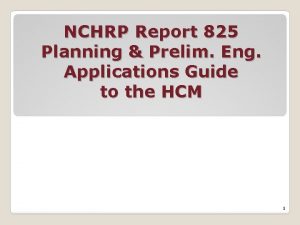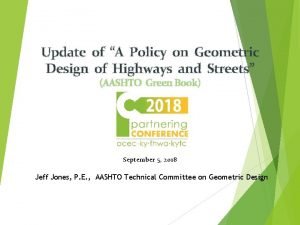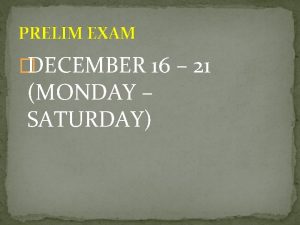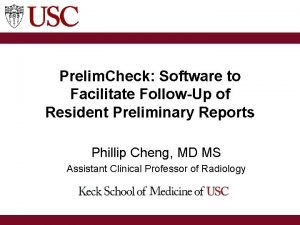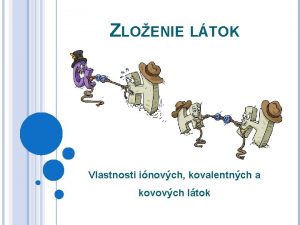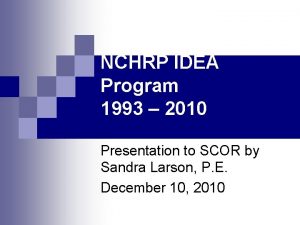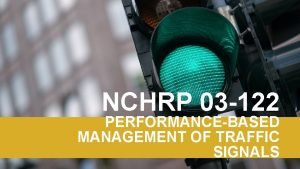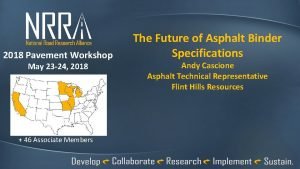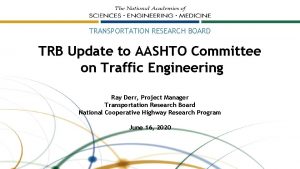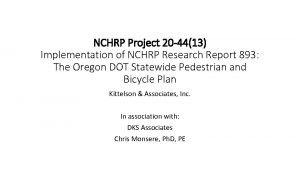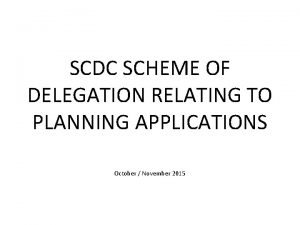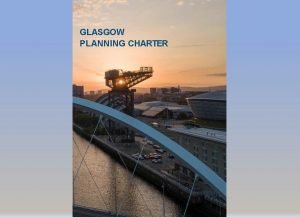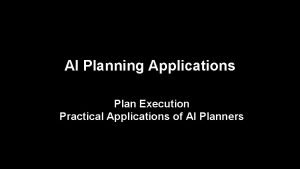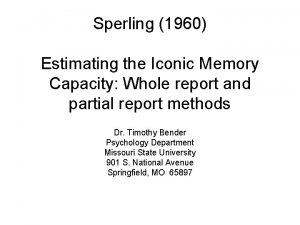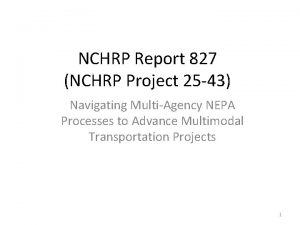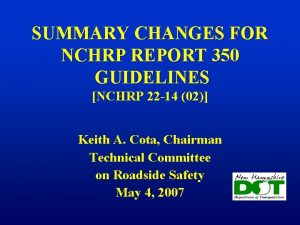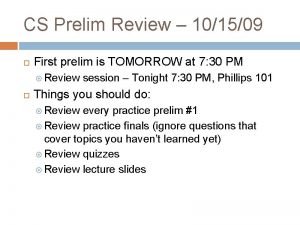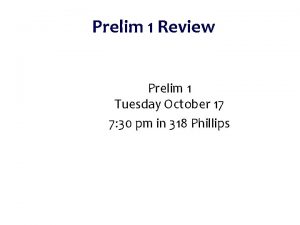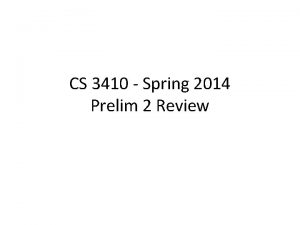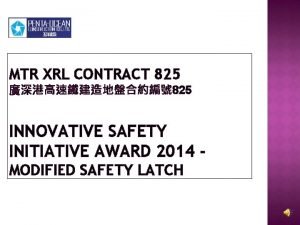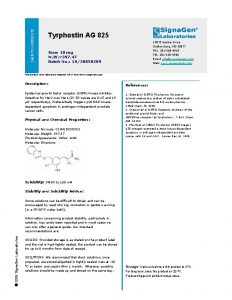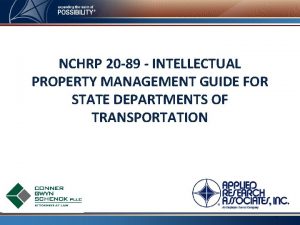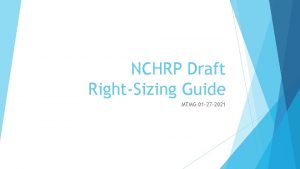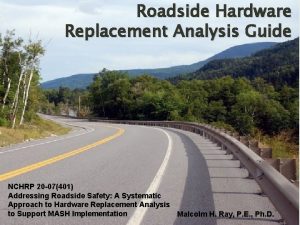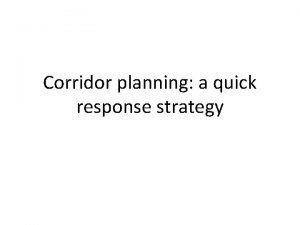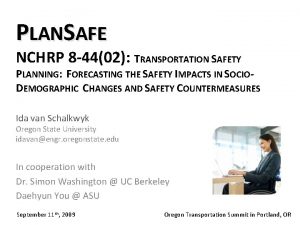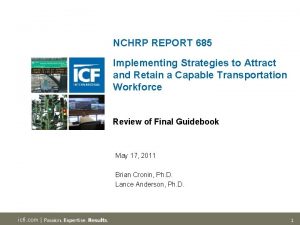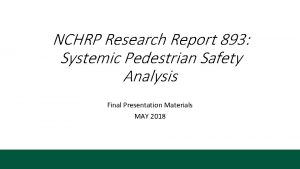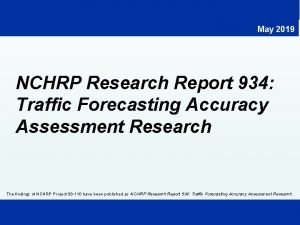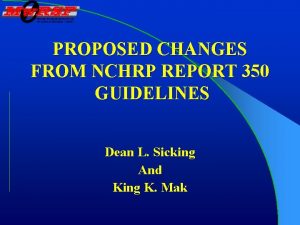NCHRP Report 825 Planning Prelim Eng Applications Guide


















- Slides: 18

NCHRP Report 825 Planning & Prelim. Eng. Applications Guide to the HCM 1

NCHRP Report 825 Guide on the use of the HCM, 6 th Edition for planning and preliminary engineering applications by identifying appropriate methods and applications, and illustrating them with case studies. 2

Why the P&PE Guide is Needed HCM is not always well suited for planning and preliminary engineering analyses. Sometimes ◦ Additional defaults need to be supplied. ◦ Gaps need to be filled or bridged. ◦ Rough spots need to be smoothed. The Planning and Prelim. Eng. (P&PE) Guide fills the gaps. 3

The People • The Research Team for NCHRP Project 07 -22 ◦ ◦ ◦ Kittelson & Associates - Rick Dowling, Paul Ryus Bastian Schroeder, ITRE; Tom Creasey, Stantec Mike Kyte, Univ. of Idaho; Danica Rhoades, Write Rhetoric The Panel Dirk Gross (Ohio) (Chair) Tyrone Scorsone (CSI) Robert Bryson (Milwaukee) Brian Dunn (Oregon ) Jessie Jones (Arkansas) Subrat Mahapatra (Maryland) Erik Ruehr (VRPA) Andrew Wolfe (SUNY) Doug Mc. Leod (Florida) Jeremy Raw (FHWA) 4

The Process Literature Review, Critique HCM, Outline Get Stakeholder Input (1 st round workshops) Interim Report 1 st Draft Guide to Panel/Stakeholders (2 nd round workshops) 2 nd Draft Guide to Panel and Highway Cap Com (Dec 2014) ◦ Revise for HCM Sixth Edition (2016) Update 3 rd Draft Guide to Panel (July 2015) Draft Final Report to Panel (December 2015) Final Report to TRB (February 2016) Training Workshops (Late 2016) 5

Overview of The P&PE Guide Part I - Introduction ◦ Types of Analyses, Defaults, Serv. Vol Tables Part II – Mid-level Analyses ◦ Facility and intersection analyses ◦ Ped, bike, transit, truck Part III – High-level Analyses ◦ Corridors, regions Part IV – Case Studies, Example Apps. 6

P&PE Guide Introduces Concept of Levels of Analysis Multifacility Single facility, point 7

Case Studies – Showing what is in the P&PE Guide Freeway Master Plan Impacts of BRT Project on Urban Street Long Range Regional Transportation Plan Analysis 8

Case 1 – Freeway Master Plan • 70 mile long Interurban Freeway 9

Objective of Case 1 To develop a Corridor Mobility Master Plan to identify current and future mobility problems in the corridor, and establish capital project priorities along the corridor. 10

Case 1 Example Problems • I. 1 – Focusing the study • I. 2 – Forecasting V/C hot spots • I. 3 – Estimating speed and travel time • I. 4 – Predicting unacceptable auto LOS spots • I. 5 – Estimating queues • I. 6 – Predicting reliability problems • I. 7 – Comparing super-congested alternatives 11

Case 2 – Urban Street BRT • 14 mile urban street • BRT to take 2 thru lanes 12

Objective of Case 2 to identify the traffic, transit, pedestrian, and bicycle impacts of the proposed BRT project will take away one through lane each direction from general traffic and create dedicated bus only lanes. 13

Case 2 Example Problems • • • II. 1 – Screening for service volume tables II. 2 – Estimating critical intersection v/c’s II. 3 – Evaluating permitted lefts II. 4 – Estimating auto and BRT speeds II. 5 – Predicting queue hot spots II. 6 – Transit, bicycle, pedestrian LOS 14

Case 3 - LRTP 2040 Regional Transportation Plan - 6, 000 square miles - 1 million population 15

Objectives • Conduct transportation performance and investment alternatives analysis required to update 2040 LRTP • Auto, truck, bus, bicycle, and pedestrian analyses to be performed. • Travel demand forecasting model to be used 16

Example Problems • • Example Problems that Develop Demand Model Inputs ◦ ◦ Example III. 1 – Estimate free-flow speeds and capacities Example III. 2 – HCM based volume-delay functions Example Problems of Post Processing Demand Model Outputs ◦ ◦ Example III. 3 – Predicting density, queues & delay Example III. 4 – Predicting reliability 17

Comments/Questions 18
 Nchrp 825
Nchrp 825 Nchrp 659
Nchrp 659 Ekstremumlar
Ekstremumlar Prelim schedule cornell
Prelim schedule cornell Prelim, midterm finals grading system
Prelim, midterm finals grading system Prelim check
Prelim check Contoh soal kombinasi lanjar
Contoh soal kombinasi lanjar Latka s teplotou topenia 825
Latka s teplotou topenia 825 775 en yakın onluğa yuvarlama
775 en yakın onluğa yuvarlama Nchrp idea
Nchrp idea + p u r d u e + c o o r d i n a t i o n + d i a g r a m
+ p u r d u e + c o o r d i n a t i o n + d i a g r a m Rowe asphalt paving
Rowe asphalt paving Nchrp 08-139
Nchrp 08-139 Nchrp 20-44
Nchrp 20-44 Scdc planning applications
Scdc planning applications Planning portal glasgow
Planning portal glasgow Ai planning applications
Ai planning applications Difference between status report and progress report
Difference between status report and progress report Using the partial report method sperling
Using the partial report method sperling
